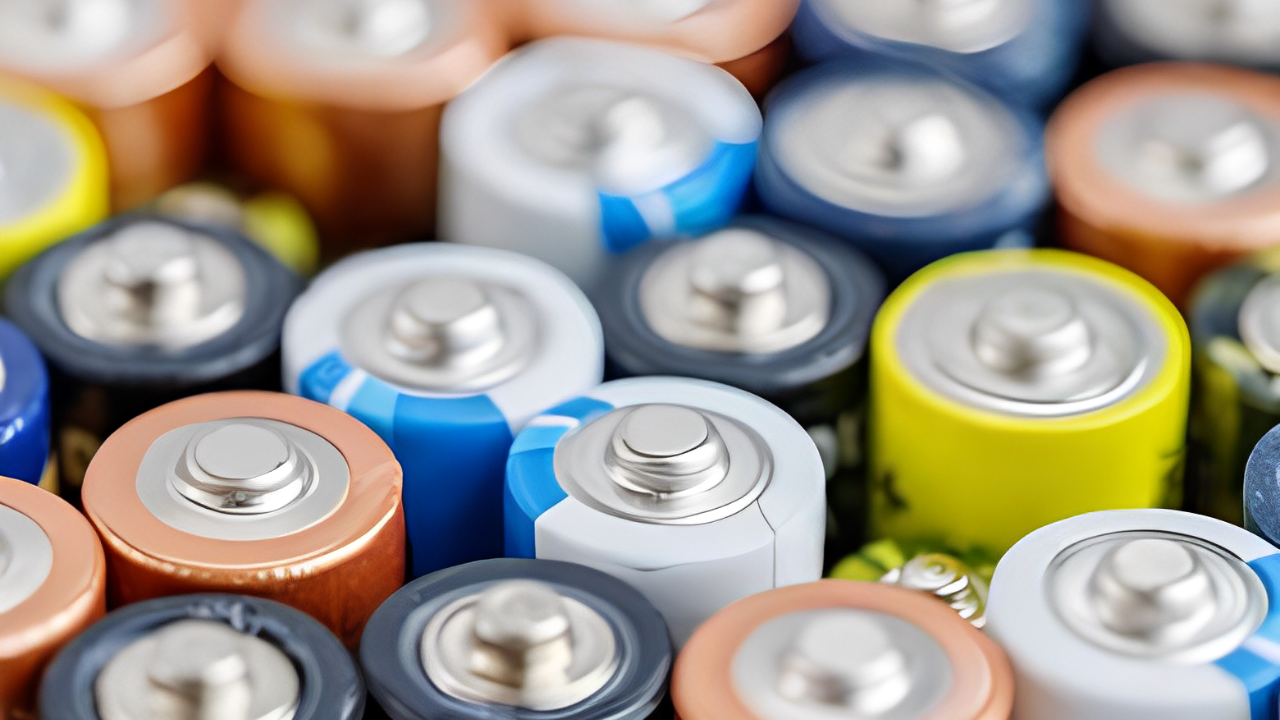Lithium batteries offer higher energy density and longer lifespans than nickel-cadmium (NiCd) batteries. NiCd batteries, while cost-effective, suffer from memory effects and environmental concerns.
Choosing between lithium batteries and nickel-cadmium options hinges on your specific power needs and device requirements. Lithium batteries stand out in portable electronics due to their lightweight, high energy density, and capacity to sustain a charge over extended periods.
They excel in high-drain devices such as smartphones, laptops, and electric vehicles. Nickel-cadmium batteries are recognized for their robustness and performance at low temperatures, making them suitable for specific power tools and emergency lighting.
However, their environmental impact cannot be overlooked, as they contain toxic metals and are less eco-friendly than lithium variants. Despite the lower upfront cost of NiCd batteries, their limited lifespan and the memory effect potentially increase the total cost of ownership.
Users should weigh these considerations against the context of use and disposal options as the market gradually shifts towards lithium technology for most applications.
Introduction To Battery Technologies
Welcome to the world of battery technologies: a realm where portability meets power. As electronic devices become more integral to our daily lives, understanding the heartbeat that keeps them alive – the battery – is essential. This introduction dives into the two prominent battery types: Lithium and Nickel Cadmium.
Overview Of Lithium Batteries
Lithium batteries stand as the powerhouse of modern electronics. These energy sources have an impressive energy density, which means they have a lot of power in lightweight, compact bodies. Their notable characteristics include:
- Longer lifespan: They often outlast other types.
- Minimal memory effect: Devices can charge anytime without affecting battery life.
- Rapid charging: Quicker to reach total capacity.
Lithium batteries power everything from smartphones to electric vehicles, marking a revolutionary step in portable energy.
Overview Of Nickel Cadmium Batteries
NiCd (nickel-cathode) batteries were once the standard for portable power but have gradually given way to other technologies. Nevertheless, their robustness in challenging environments keeps them relevant. Key advantages include:
- Durability: Perform well under rigorous use.
- Stable voltage: Provide consistent power output.
- Tolerance to extreme temperatures: Reliable under varied conditions.
Although their use is declining, Nickel Cadmium batteries have carved their niche in applications requiring steadfast performance.
Importance Of Battery Choice In Electronics
Choosing the correct battery for your electronic device isn’t a decision to take lightly. It affects:
| Feature | Lithium Batteries | Nickel Cadmium Batteries |
|---|---|---|
| Weight and Size | Lighter and smaller | Heavier and larger |
| Lifespan | Longer | Shorter |
| Eco-Friendly | More | Less |
Ultimately, the choice defines your device’s convenience, longevity, and environmental impact. Knowledge of battery types steers consumers towards more intelligent, sustainable technology use.
Comparing Lithium And Nickel Cadmium Batteries
Two types of Lithium often spark discussion in rechargeable batteries: Lithium and nickel-cadmium (NiCd). Each kind has unique attributes that impact electronic devices. Users must understand these differences to choose the best battery for their needs.
Energy Density And Efficiency
Lithium batteries dominate energy density, providing more power per unit weight than nickel-cadmium batteries. This attribute makes lithium batteries ideal for mobile devices where weight and efficiency are critical.
| Battery Type | Energy Density (Wh/kg) |
|---|---|
| Lithium | 150-200 |
| Nickel Cadmium | 40-60 |
Lifespan And Durability
Lithium batteries generally last longer than NiCd batteries. They can handle hundreds of charge cycles before performance declines. NiCd batteries are robust but offer a shorter lifespan in comparison.
- Lithium: 500-1000 cycles
- Nickel Cadmium: 1000 cycles, but with reduced capacity over time
Charge And Discharge Rates
Fast charging is a strength of lithium batteries, outpacing NiCd. Both types sustain high discharge rates, but lithium batteries maintain consistent voltage longer.
Use Lithium for quick charging.
Both batteries handle large loads well.
Memory Effect And Maintenance
Nickel, There’s a memory effect with cadmium batteries. This effect reduces their capacity if not fully discharged before charging. Lithium batteries have no such issue, which simplifies maintenance.
Environmental Impact And Disposal
The materials in lithium batteries cause less environmental harm than those in NiCd batteries. NiCd contains Cadmium, a toxic heavy metal regulated for disposal. Lithium batteries require careful recycling but are a more eco-friendly choice.
- Lithium: Non-toxic; recycle properly.
- Nickel Cadmium: Toxic; dispose of per regulation.
Applications And Use Cases
Choosing the right battery technology is crucial. Whether we’re powering gadgets or gearing up for an emergency, battery choice affects performance, cost, and safety. Let’s explore where lithium and nickel-cadmium batteries shine.
Consumer Electronics And Portable Devices
- Lithium batteries dominate in smartphones and laptops. Their high energy density ensures more extended usage. Plus, no memory effect means convenience in recharging.
- Nickel-cadmium batteries find their niche in budget-friendly items. Toys and essential household items are often used for their lower upfront cost.
Power Tools And Industrial Applications
- Power tools prefer lithium batteries. They offer more power and longer life, cutting down on work interruptions.
- In contrast, nickel-cadmium is the choice for harsh conditions. Their ability to withstand extreme temperatures and rough handling makes them reliable.
Emergency Systems And Backup Power
- Lithium stands out for emergency lighting and UPS systems. Quick response and lightweight design spell efficiency.
- Nickel cadmium backs up critical infrastructure. Their long-term stability and durability count in high-stakes situations.
Aviation, Military, And Specialty Equipment
- The military and aviation sectors trust Lithium for high-tech gear. Performance at altitude and in extreme conditions is critical.
- NickeNickel cadmium is good for submarines and space rovers. Their predictable discharge cycle and robustness are critical in challenging environments.

Credit: www.arrow.com
Cost-benefit Analysis
Cost-benefit Analysis is crucial when choosing between Lithium and nickel-cadmium (NiCd) batteries. This Analysis helps you decide what battery works better financially in the long run. Let’s break down the costs and benefits of each to make an informed decision.
Initial Investment And Long-term Value
Lithium batteries have a higher upfront cost than NiCd batteries. But they have a greater energy density, meaning they last longer before needing a charge. This reduces the frequency of replacements. With a longer lifespan, lithium batteries provide better value over time.
Replacement Costs And Total Ownership
- Lower maintenance: Lithium batteries require less maintenance than NiCd, saving costs and time.
- Higher cycle count: They can charge and discharge many times before performance drops.
NiCd batteries, while cheaper, need replacing more often. This increases the total cost of ownership.
| Battery Type | Replacement Interval | Long-Term Costs |
|---|---|---|
| Lithium | Longer | Lower |
| NiCd | Shorter | Higher |
Market Trends And Availability
The market trend leans towards lithium batteries due to their efficiency and eco-friendliness.
However, they are also widely available, making them popular for various applications. NiCd batteries are less in demand but can still be found in specific niches where cost is a more significant factor.
- Higher demand for Lithium corresponds with more innovations and improvements.
- NiCd availability might dwindle as technology advances, possibly affecting future replacement costs.
Making The Right Choice
Finding the perfect power source can be tricky. Two popular options are Lithium batteries and Nickel Cadmium (NiCd) batteries. Each has unique benefits and limitations.
Knowing which one to pick is crucial for optimal performance and sustainability. Below, explore the prime factors to consider when choosing between these two battery types.
Assessing Specific Needs And Requirements
When deciding between Lithium and NiCd batteries, assess your needs precisely. Here are vital aspects to consider:
- Energy Density: Lithium batteries offer high energy density, which lasts longer.
- Memory Effect: NiCd batteries suffer from memory effects, reducing their efficacy over time.
- Weight: Lithium batteries are lighter, making them ideal for portable devices.
- Discharge Rate: NiCd batteries perform better with high discharge rates.
Understanding these aspects allows users to match battery type to specific device requirements.
Considering Environmental And Regulatory Factors
Environmental impact plays a crucial role in battery selection:
- Lithium batteries have a lower ecological footprint, containing no toxic metals.
- NiCd batteries contain Cadmium, a hazardous substance, leading to strict regulations for disposal.
- Choosing Lithium batteries can contribute to a sustainable future with proper recycling.
Determining the environmental consequences and ensuring compliance with disposal regulations is vital.
Future Prospects And Technological Advancements
Technological progress should also influence battery choice:
| Battery Type | Advancements |
|---|---|
| Lithium | Continuous improvements in capacity and reduced costs. |
| NiCd | Limited advancements due to older technology. |
Considering the pace of innovation may ensure that your choice remains effective in the long term.

Lithium Battery Vs. Nickel Cadmium Cost
As of my last knowledge update in January 2022, the cost of lithium batteries is generally higher than that of nickel-cadmium (NiCd) batteries.
However, It is noteworthy that battery costs can fluctuate due to various factors such as technological advancements, market demand, production costs, and environmental regulations.
Lithium batteries, including lithium-ion (Li-ion), are frequently found in various electronic gadgets and electric vehicles. Lightweight materials have a high energy-dense nature and a longer lifespan than nickel-cadmium batteries.
The demand for lithium batteries has been increasing, driven by the growing popularity of electric vehicles and renewable energy storage solutions.
Nickel-cadmium batteries have a lower energy density and a shorter lifespan than lithium batteries, especially in terms of durability and reliability.
They have been employed for many years in various applications, including power tools and emergency backup systems.
It’s worth checking the most recent market trends and prices to get nickel-cadmium batteries nickel-ca at the same batteries, as the landscape can change over time.
Remember that advancements in battery technology and changes in market dynamics may impact the relative costs of these battery types.
Frequently Asked Questions For Lithium Battery Vs Nickel Cadmium
What Is The Lifespan Of Lithium Vs Nickel Cadmium Batteries?
Lithium batteries typically have a longer lifespan, often exceeding 500 charge cycles. Nickel Cadmium batteries usually last about 1,500 cycles but have a memory effect that can reduce their functional lifespan when not fully cycled.
How Do Lithium And Nickel Cadmium Batteries Compare In Cost?
Initially, Lithium batteries may cost more than Nickel Cadmium batteries. However, their longer lifespan and maintenance-free nature often lead to lower costs. Nickel Cadmium batteries are cheaper upfront but may incur more replacement and maintenance expenses.
Can You Recycle Lithium And Nickel Cadmium Batteries?
Both Lithium and Nickel Cadmium batteries are recyclable. However, their recycling processes differ. Disposing of them properly is crucial due to Lithium’s reactivity and Cadmium’s toxicity.
What’s The Environmental Impact Of Lithium And Nickel Cadmium Batteries?
Lithium batteries pose lower environmental risks due to reduced facility. Batteries made of nickel-cadmium contain Cadmium, a hazardous material, thus demanding careful disposal and recycling to minimize environmental impact.
Conclusion
Choosing between lithium and nickel-cadmium batteries depends on specific needs. Lithium excels in performance and longevity, ideal for portable electronics. Nickel-cadmium suits budget-conscious projects with less frequent cycling.
Understanding each type’s strengths ensures an informed decision for your power requirements, blending efficiency with cost-effectiveness.
Remember, the correct battery can elevate your device’s potential.

I am a technology Specialized writer and blogger based in the USA & UK. I have four years of experience in Technology, Social Media and all types of Battery’s like Solar Battery,Car Battery,Lithium Battery etc. So I work on solving these issues and give various tips on these issues.
